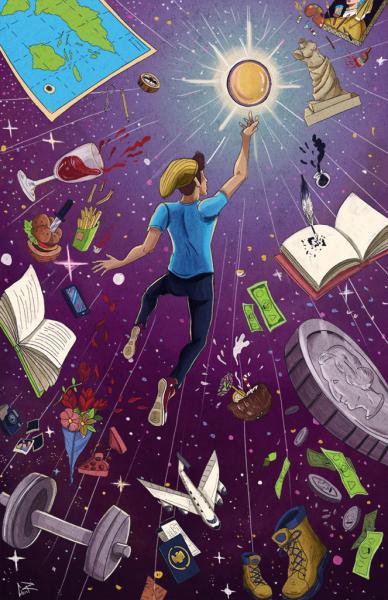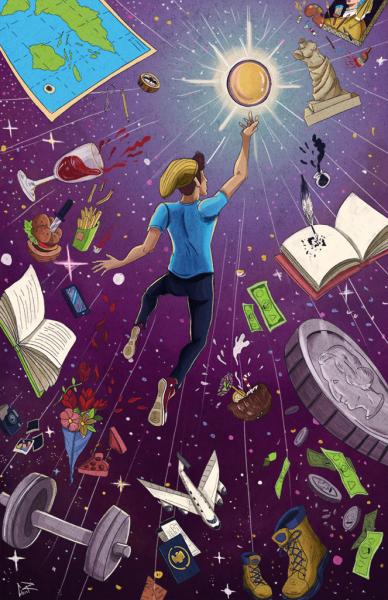Found Documents from the Life of Nell Johnson Doerr


The trick of the fiction writer is the beautiful lie, writing words to create experiences that never happened. When the novel was still “novel,” writers often imitated nonfiction forms: diaries, like the great Wuthering Heights by Emily Bronte; or letters, like Samuel Richardson’s Pamela; or travelogues, like Daniel Defoe’s Robinson Crusoe. Writers are still up to the same trick, so much that Lucy Ives coined a term for it in a 2016 blog in The New Yorker. She calls the genre, “archival fiction.”
My new novel, Found Documents from the Life of Nell Johnson Doerr, published this spring by the University of New Mexico Press, is all archives. The book is a collection of letters, diary entries, notes, newspaper articles, and drawings, all purported to have been found in an old suitcase. So, my novel is comprised entirely of false documents. Set in Lawrence, Kansas, between 1854-1890, Found tells the story of Nell Johnson Doerr, who, after losing her husband in Quantrill’s Raid in 1863 and after discovering, while hiding in her basement, the forms of ancient creatures in the foundation rock, becomes fascinated with fossils. In her study of bryozoans, she becomes an amateur invertebrate paleontologist, eventually writing a paper presented in Washington, D.C. As it happens, Nell is a character from my novel Rode, a baby rescued from the embers of her dead parents’ cabin in 1825 on the Hatchie River of Tennessee and adopted by Robert and Jo Johnson. She and her husband move to Lawrence to be part of the Underground Railroad.
An imagined archive is as demanding as a real archive. Given my subject, I researched the political history of the U.S. and Kansas. I learned the names of Lawrence merchants, the history of railroad and dam building, the Unitarian church, and the fledgling days of Kansas University. Since Nell was an amateur paleontologist, I learned about fossils, as well as the history of science—when people knew what about rock formations and fossil deposits in and around Lawrence. After the “fact finding,” I took the advice I give other writers: “Know it cold, then write it hot.” Still, I had to find voices and vocabulary true to character, time, and place.
Writing is a form of discovery. It is also, as writer Ben Lerner has said, a form of very close reading. Words put voice and flesh onto the page, one at a time, and the writer must pay close attention to what the words are saying, sensually and emotionally. As a writer, I want to be controlled by words, guided and led by language. In Writing the Australian Crawl, Kansas poet William Stafford likens writing to swimming, trusting language like water, to hold you up. If writing is close reading, writing archival fiction is like transcription. I often felt like I was transcribing, rather than creating, what Nell and the other characters wrote. I “read” their words as I was writing them. I felt lucky through the process. Here is Nell’s voice in an 1855 letter to her sister: Mary, I have left Arkansas, and family, and the two babes earthed in our family plot. I have given up my garden, my precious roses nodding with dew in dawn light. I have given up trees, and make do with grass. I have given up streams and creeks for ditches and draws. I have given up shade for punishing sun and gentle rain for cloudbursts.
Finally, as with any set of documents, the researcher/writer must find in them the metaphors that create meaning. Nell Doerr was, after all, rescued, discovered, found as a baby, and she is also a rescuer (as in her work on the Underground Railroad), a discoverer (of fossils), and a finder (of science and of herself). I set the novel in the nineteenth century because science was radically changed by On the Origin of Species, published by Darwin in 1859, and because those years were so supportive of amateur science. They were also years when women began to make strides. Nell represents both movements. At the end of the novel, her sister sends her a stone. Nell writes:
The stone is a geode. That it was gathered from the place of my birth and near death is a shock to me. How much else was kept from me? . . .
I broke the rock, one clean hit of hammer on chisel. Each half was a cave of purple crystals, amethyst, like sharp teeth, jagged, mirroring light, color softening at the points, a beauty hidden all these years. My father knew what was inside. He wanted to break the rock. But he did not. So much of what we know is on the surface only. Many think we are not meant to delve deeply. We are afraid to break the rock. Who knows what we might find inside? I have broken the rock and found beauty. Over and over I have broken the rock.
As I sought and discovered, and, yes, “found” the world of Nell Johnson Doerr, I was creating a beautiful lie that told the truth, just as I imagined she herself was doing in her diary and letters. Such was my pleasure in writing this novel using the device of archival fiction.
This blog has also made an appearance in Glimmer Train Bulletins.
Recommended
Nor’easter
Post-Op Appointment With My Father
Cedar Valley Youth Poet Laureate | Fall 2024 Workshop



 Thomas Fox Averill, an O. Henry Award-winning fiction writer, is Professor Emeritus of English at Washburn University, where he taught creative writing and Kansas literature for 37 years. His fifth novel,
Thomas Fox Averill, an O. Henry Award-winning fiction writer, is Professor Emeritus of English at Washburn University, where he taught creative writing and Kansas literature for 37 years. His fifth novel,  My name is
My name is 

